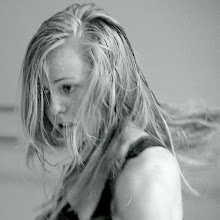I was trying to give myself an overview on what I have till now.
I have about seven different elements:
Music piece I
- failure
- ronda alla turca on piano
Music piece II
- failure
- Bach Symphony played all together
Music piece III
- failure
- Improvisation on the drums
Movement sequence on " caught up"
- more for the use of an reaction in
between the piece
Movement sequence on " failure"
- learned by heart from a piece of paper
- no practice
Movement sequence on " perfection"
- plus dogma sentences
- plus failure in the end
Statements on failure
- intimate, private insight
I started playing a little with it and thought of how I could start the piece.
One Idea is:
I start with the statement part.
I clould let each of them stand on stage in a cone of light, (for the atmosphere of revealing something, beeing exposed), let them give their statement to either how they feel personally the moment they faile. Or I could let them give a statement on theier music piece and let them talk about exactly that failing moment.
I ´d like to stick with that idea cause I like the idea of honesty on stage.
Another idea is:
To start with the failure dance sequence.
And also with the idea of making it "honest failure" through using the "paper method"
I mentioned before.
The idea is to have a projection on the backwall of the follwing text:
"About two weeks ago three dancers received a piece of paper with a written choreography. Their task was to learn that choreography by heart, but not to dance it out before now.
They only practiced it in their heads.
Tonight is the first time they actually dance it out."
Than the movement sequence is going to be projected on the screen the same time as the dancers dance it out on stage.
Maybe the dancers could even write down their mistakes after they danced it out. As kind of a life refelection of their failure on stage.
The thing about this version is, that I would not really stick with my original idea.Since this version is clearly playing with the provocation of failure.Primarily the idea with the written choreography was more for the sake of receiving an honest way of failure but not to expose the way of how they fail.
So through let the audience know about the challenge of dancing it the first time on stage, it is not convictable anymore.And the it´s not about the receivement of the perfect state anymore, cause it hasn´t been practiced before.
I also researched a little on other choreographies with the topic of failure to get a wider perspective on it, and found out the following:
http://www.youtube.com/watch?v=WgHlAK8perw
Beige (2007)
A choreography by Giulia Mureddu for the dancecompany Krisztina deChâtel.Beige is a piece in which she magnifies the area between success and failure. The three dancers are determined to avoid failure but with this determination their failure actually starts. Will they succeed, or do their attempts to succeed fail already beforehand? Beige is the moment before you dive nothing is yet lost, but neither is anything won.
This choreographer is more dealing with sucess as with perfection. Though I can see a clear connection since they research on the avoiment of failure.
I like a lot that the result is that failure can´t be succeded.
But I think the choreography is to clean to "succeded" for really making the topic an khonest issue also insite the piece.
Something else I found is youtube dance performances and in a way their close connection to failure.
For example, this performance of "I Want to Love You Tender" by Armi & Danny, a successful 1970s duo, was popular on the Internet even before YouTube took off.
What is it about dancing that makes it so recyclable as comedy? Is it cause of it´s failure?
Television comedy that relies on dialogue doesn’t always work very well; if the viewers don’t understand the references to contemporary events the comedy falls flat. With dance performances, however, the viewers’ inability to quite understand the frame of reference of the performance can make it even funnier. For the Internet user, it is often unclear whether a performance was originally meant as serious or as a joke. For example, Gregorius’ Finnish language version of "YMCA" perplexed viewers when it briefly became the most watched clip on Youtube this autumn. Dressed in sports gear, Gregorious and a group of male backing dancers perform a curious choreography. Was this really considered cool in the 1970s Finland? No it wasn’t – the performance was originally meant as a joke. Uncertainty about the intentions of the performers often adds to the fascination of old dance performances.
Their performance seems like a pathetic, failed attempt to copy international fashions. For the contemporary viewer it provides a comforting view of 1970s Finland, seemingly more naive than the self-reflexive present. ( extracts of " What is so comical about old choreography" by Maria Pajala)
http://www.youtube.com/watch?v=kA5GkLM5C7M
With this example I can see that failure and its actuall beauty of it is more often a topic than expected. And mostly not choosen with the intention to pick it out as a central theme. And obviously in the nower world of video publishing used as a means to an end, by now in awareness but in the beginnings also unconcious.
So far till the next rehearsal together with my dancers again.

Keine Kommentare:
Kommentar veröffentlichen